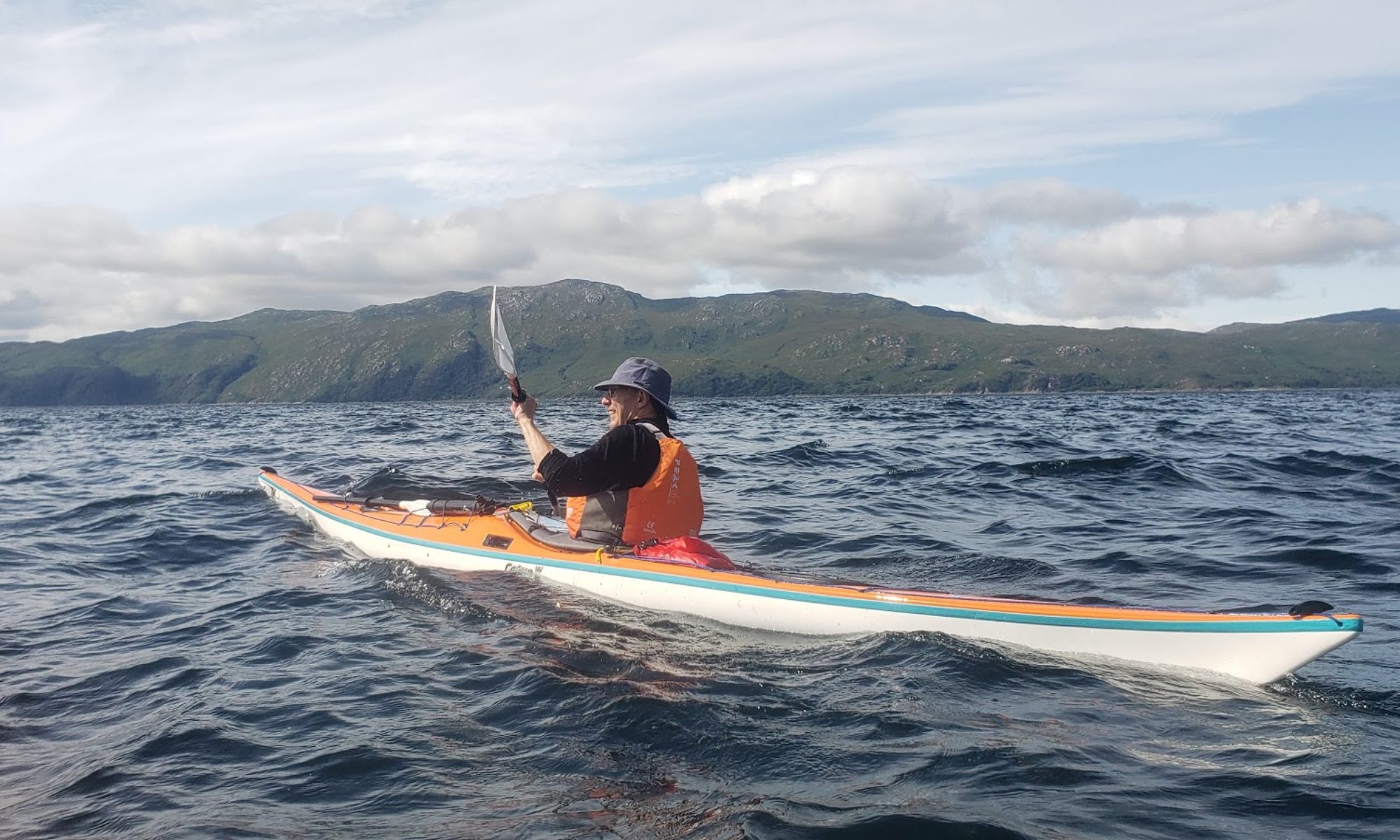Paddlers: Hugh, Geoff, Steve W.,Gordon, David and Innes
Weather: Grey windy and wet getting better over the weekend.
Route: Port Askaig-Craighouse-Port Ellen
Report: Saturday 18th
We had spent the previous week mulling over the weather forecasts which varied from poor (wet and windy) to extremely poor (very windy and wet). In the end, despite wind forecasts of F4 we decided to go ahead but without the long crossing from the mainland. The plan involved an 06.30 departure from Helensburgh to catch the 09:45 for the 2 hour 10 minute crossing from Kennacraig to Port Askaig. This proved to be excellent timing. Trolleys were required for the walk through the car park and for loading on to the ferry


Low cloud and drizzle accompanied us throughout the day but thankfully the wind was relatively light. We made use of the steep slip into the old harbour and were able to get away shortly after the tide turned. It was important to catch the tide as it runs at at up to 5 knots. Thus we were carried quickly down the sound to our first stop, the rather pleasant MBA Bothy at An Claddach.

From the Bothy we headed across the Sound to Jura and, at the behest of Hugh, headed for a “Chambered Cairn” marked on the map. 

The landing was not easy but, on the basis of hill shape, the search began. This involved a long trek through deep undergrowth covering an extremely rough deforested area. At its politest it would be true to say that enthusiasm for the search massively outweighed map reading ability and as a result failed. Closer inspection of the map showed “standing stones” marked at the site on earlier editions of the OS Map and eventually we all agreed that the two small white stones close to our landing point was the reputed chambered cairn. The details of the cairn can be found at https://canmore.org.uk/site/38244/jura-cladh-chlainn-iain
The rock formations along the coast were spectacular with gashes, towers, twisted rocks etc. At one point we were joined by a female kayaker from a small group of houses who was anxious to share her love for the area.
We had agreed that, with rain continuously threatening we would stay at the excellent campsite at Craighouse, used previously on one of our trips. We arrived at about 19:00 and pitched, which was not a pleasure with the light rain mixed with clouds of midges. However the adjacent hotel provided good food, beer and shelter and a convivial evening.

Sunday was drier, brighter but windier. From Craighouse we retraced our route and then had to make a decision on whether to go back up the Sound for a shorter but less windy crossing or take the direct route. We chose the latter and for the next 80 minutes were pummeled by a strong northerly wind hurling down the Sound.


As usual photographs do not convey the instability and tension induced by rough weather. Who takes his hand off the paddles in those circumstances? Eventually we landed by Proaig bothy (not MBA) for lunch and readings from the amusing Bothy Books.
The weather had been steadily improving with wind dropping and a hazy sunshine. The next section of the paddle was sea kayaking at its best; remote, rocky and fragmented coastal scenery backed by high hills coupled with lively conversation between the paddlers.


Rock Hopping close to the shore also provides both amusement and shelter provided you do not hit any.


In our quest to keep inshore we cut inside a pair of islands (Eilean Mhic Mhaoinoire). As is shown on the map the channel does not dry out but, unknown to us, does get so shallow we were forced to wade for a few hundred metres.

The next task was to find a camp site. To minimise the paddle on the Monday and ensure we caught the ferry we decided to head on past Ardbeg to Lagavulin and camp there.


Dunyvaig is a spectacular ruin that is, unfortunately, inaccessible for safety reasons. https://en.wikipedia.org/wiki/Dunyvaig_Castle gives the history.
Unfortunately there are no good camping sites there so we headed on to the island of Texa where we were greeted by a large herd of goats. The Camp site on Texa was very rough and there appeared to be no wood. However we managed to find enough to have an excellent fire and with fine dry weather and few midges a good evening was had by all.

Monday dawned dry, bright and almost windless. With more than enough time we decided to explore the island and, in particular the two caves marked on the OS Map. The island is not very interesting (see https://www.islay.blog/article.php/islay-texa-island ) for further information and we were unable to find the caves. Que Sera.
The paddle into Port Ellen was once again, beautiful and Port Ellen is now a very attractive village with a couple of excellent sand beaches. Camping looks quite possible. 

There is a good slipway to the east of the ferry berth where we landed, changed clothes and loaded the kayaks on the trolleys. We caught the 12:45 boat and had Cal-Mac’s excellent Fish and Chips for lunch. Unpacking the kayaks and loading the cars took over half an hour and we eventually left Kennacraig at 15:30, arriving back in Helensburgh at 18:00.

Wildlife included 2 separate sightings of Sea Eagles, 2 Otters (at Craighouse) and hundreds of seals, particularly on the rocks on the second day.
I noticed, in this report, how often I had used the term excellent and this word really summarises the whole experience. This was an excellent trip with wonderful companions in a relatively unknown and thoroughly recommended area.



